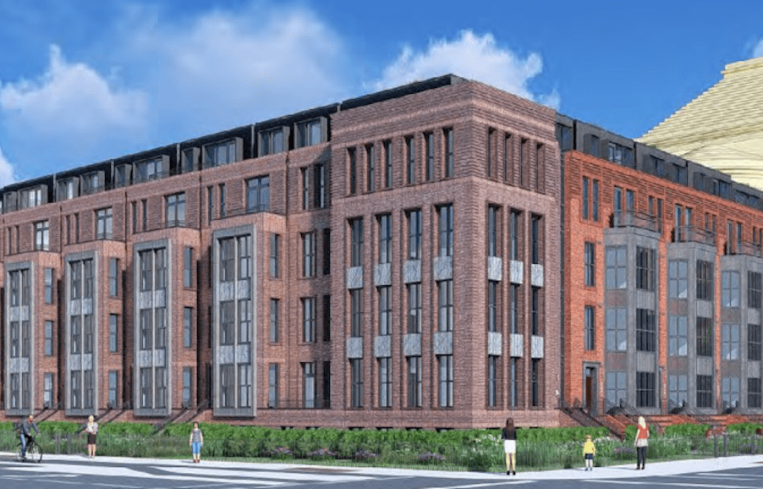Renters Now Rule the Suburbs in DC, Miami and Los Angeles
The American Dream may no longer be about buying a home, but renting one
By Keith Loria September 24, 2021 3:07 pm
reprints
It was only a decade ago when homeowners ruled the suburbs, but a new report by RENTCafé reveals that over the past decade, renters have begun to dominate in 103 suburbs that were historically homeowner territory.
Additionally, the report, which looked at figures from 2010-2019, projected that 57 other suburbs would follow suit in the next five years.
RENTCafé examined the 50 largest metros in its report and found that out of 1,105 suburbs analyzed, there were 242 where renters were in the majority. The top metros seeing this transition are Washington, D.C., Miami and Los Angeles.
“Indeed, we can see that renter suburbs cluster on the East Coast around New York and D.C., yet things have changed the most in the D.C. area,” Adrian M. Popa, RENTCafé’s content strategist, told Commercial Observer. “This might have happened due to D.C. sprawling and developing in a more homogenous manner than other metros did.”
He added it could also be linked to the fact that the Capital is an excellent place for young professionals to find employment, especially if they majored in computer science, marketing, and management.
“Not only is D.C. the second-best metro to find work as a recent grad, but it’s also the best place to kick-start a career on the East Coast, surpassing New York,” Popa said.
Combined, nearly 40 of the suburbs that transitioned to renter-majority in the last decade belong to the top trio, D.C. leading the way with 14, Miami with 13 and Los Angeles clocking in at 12. Even the ritziest zip code of them all, the infamous 90210, made the list.
On average, a quarter of apartment dwellers living in D.C. are high earners—with incomes above $100,000— and they’re more likely to be renters by choice, according to the report. However, in Miami only eight percent are classified as high earners, while in Los Angeles, it’s 18 percent.
In Beverly Hills, Calif., 51 percent of residents now rent, despite having a median income of $81,000, among the highest of the 103 renter-majority suburbs.
But the highest median income belongs to the D.C. suburb of Merrifield, Va., coming in at $98,000, which is about twice as much as the national median income of suburban renters. During the decade studied, Merrifield renters increased by 87 percent, and it also has the highest share of renters out of the 103 suburbs looked at, with 64 percent.
According to Popa, people look to the suburbs for more space, more peace, and higher affordability, but the most sought-after places are the so-called “fringe areas,” at the border between the urban and suburban. And that’s why Merrifield ranked so high.
“Life is more appealing here—good internet, ample supply of apartments, easy access to downtown. D.C., and the Metro has one of the best commute networks,” he said. “Merrifield was an owner-majority suburb 10 years ago, but it thrived and continued to grow because it offers a combination of all the benefits mentioned. The city is one of the fastest growing in the area (28 percent more inhabitants in 2019 than in 2010), and we can attribute at least part of this change to renters.”
There are also a few suburbs that didn’t have a strong rental market 10 years ago but that are becoming more popular among renters. Such suburbs in the D.C. area are Herndon, Va., and Ashburn, Va., where renter share increased more than 40 percent. Herndon has 36 percent renters, a 45-percent increase in renter share; while Ashburn has 24 percent renters, a 41-percent change in renter share.
In the Miami metro, the suburb of Doral increased 83 percent in number of renters, growing to more than 30,000 renters in the last decade.
The country’s 50 largest metros saw an increase of 4.7 million people since 2010 according to the latest data from the U.S. Census, and renters in these areas went up 79 percent in these areas to approximately 21 million people. That’s 3.7 million more than a decade ago. Meanwhile those that own homes only increased 3 percent during the same timeframe.
The latest Census also showed that 39 percent of those living in suburbia are renters today, with a majority of those being millennials and Gen Zs looking for housing that better suit their budgets. In fact, about 55 percent of suburban renters are younger than 45 with a median household earnings of about $50,000.
Of the suburbs projected to flip to a majority or renters sometime soon are the Cleveland, Ohio suburb of Maple Heights, which was up 87 percent in the last 10 years, topping out at 47 percent. Others that show similar increases include Redan, Ga.; Hazel Park, Mich.; Glen Cove, N.Y.; and Oakland Park, Fla.—all are expected to become renter-majority suburbs in the next year.
“Compared to 10 years ago, we see that renter majority suburbs appear to be closer and closer to the core city,” Popa said. “We estimate that three other [D.C.] suburbs will soon turn to renter-majority, if they maintain a similar renter share growth: Grovetown, Va., Gaithersburg, Md., and North Bethesda, Md.”
Keith Loria can be reached at Kloria@commercialobserver.com.



